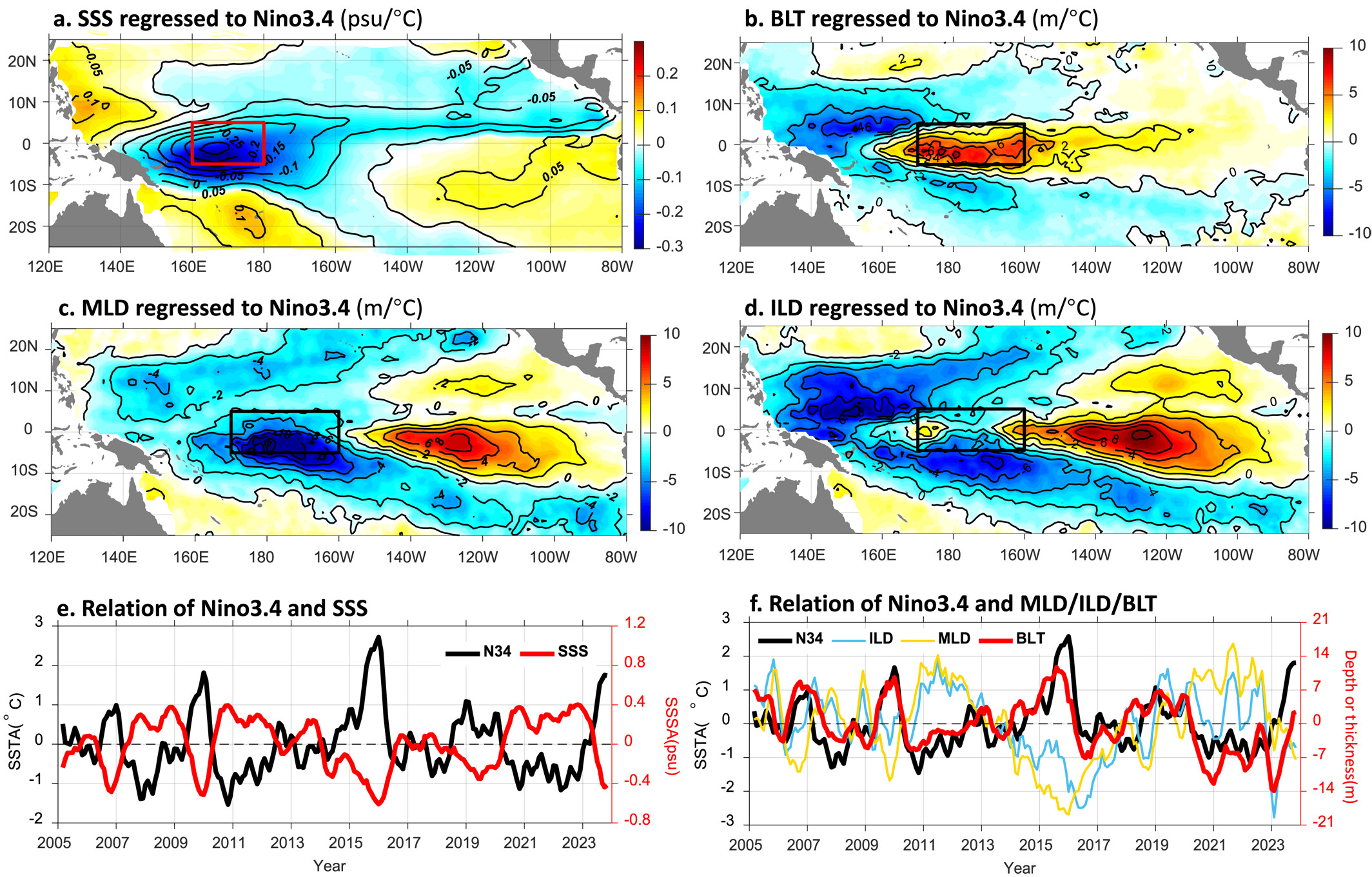Barrier Layer Variability in the Central Equatorial Pacific Associated With ENSO Development
Cong Guan, Michael J. McPhaden, Shijian Hu, Fan Wang, Yuanlong Li, Manman Cui
Published in Geophysical Research Letters, March2025
Previous studies suggest that a thick barrier layer can strengthen surface warming during El Niño and vice versa for La Niña. Here we find barrier layer changes of up to 6 m in the central equatorial Pacific (CEP, 170°E−160°W, 5°S–5°N) in response to a 1°C change in the Niño 3.4 index using 19 years of Argo observations. Our analysis reveals that mixed layer variability due to strong interannual salinity anomalies determines the changes in CEP barrier layer thickness (BLT) during El Niño Southern Oscillation events since isothermal layer variations are minimal there. During El Niño, enhanced rainfall leads to anomalous surface freshening in the CEP especially west of the dateline, while anomalous vertical-sheared zonal current results in stronger vertical salinity stratification and thicker barrier layer east of the dateline in the CEP. Surface-layer zonal current advection in general contributes to a thicker barrier layer in the entire CEP.

Fig. Interannual anomalies of (a) sea surface salinity (SSS), (b) barrier layer thickness (BLT), (c) mixed layer depth (MLD), and (d) isothermal layer depth (ILD) regressed to the Niño 3.4 index (N34) in the tropical Pacific based on Argo. Panel (e) shows the interannual SSS anomalies averaged in the red box (160°E−180°, 5°S–5°N) and its relation with the N34, while f is for the interannual anomalies of BLT, MLD and ILD averaged in the black box (170°E−160°W, 5°S–5°N) and their relation with the N34.
Guan, C., McPhaden, M. J., Hu, S., Wang, F., Li, Y., & Cui, M. (2025). Barrier layer variability in the central equatorial Pacific associated with ENSO development. Geophysical Research Letters, 52, e2024GL113396. https://doi.org/10.1029/2024GL113396